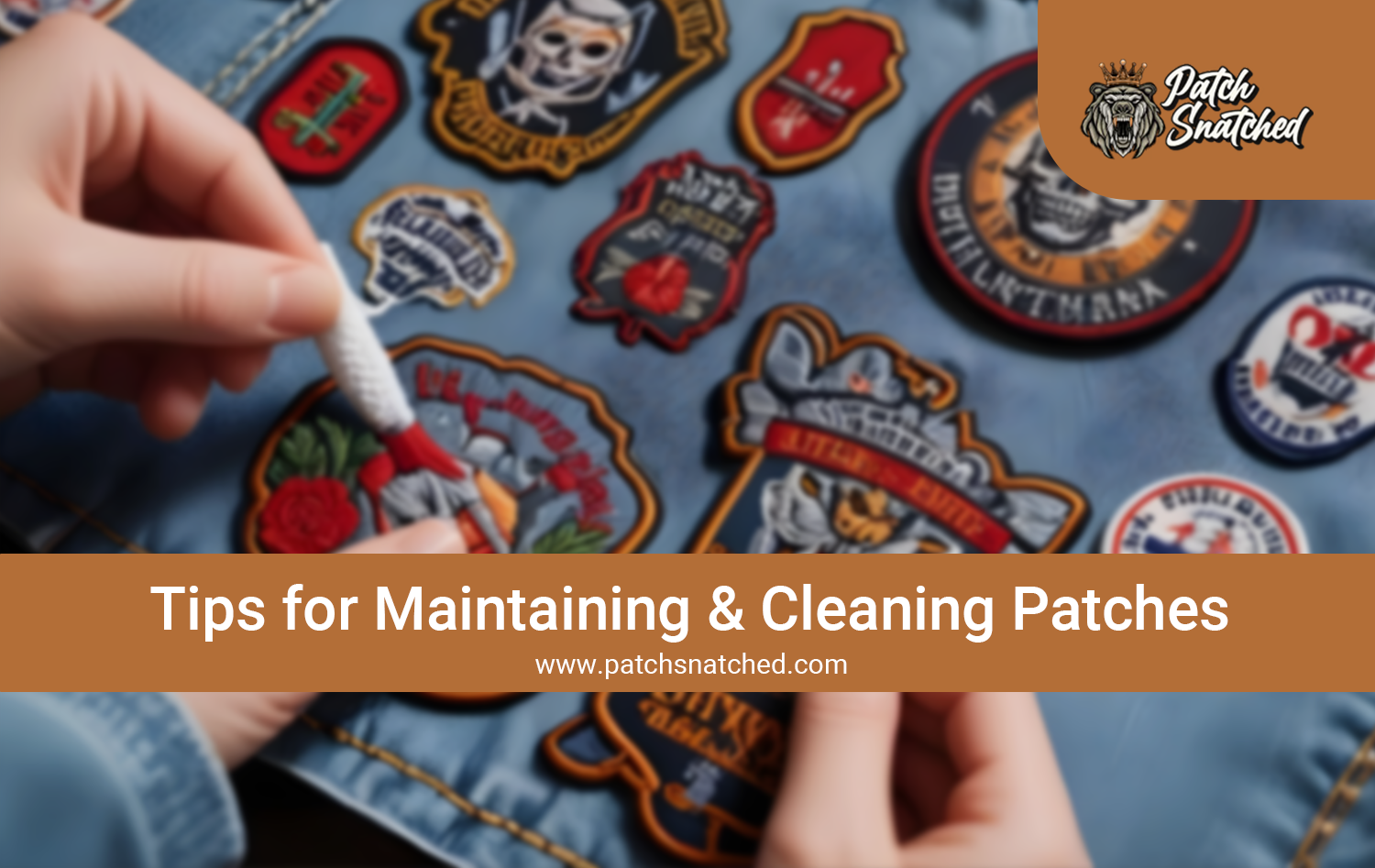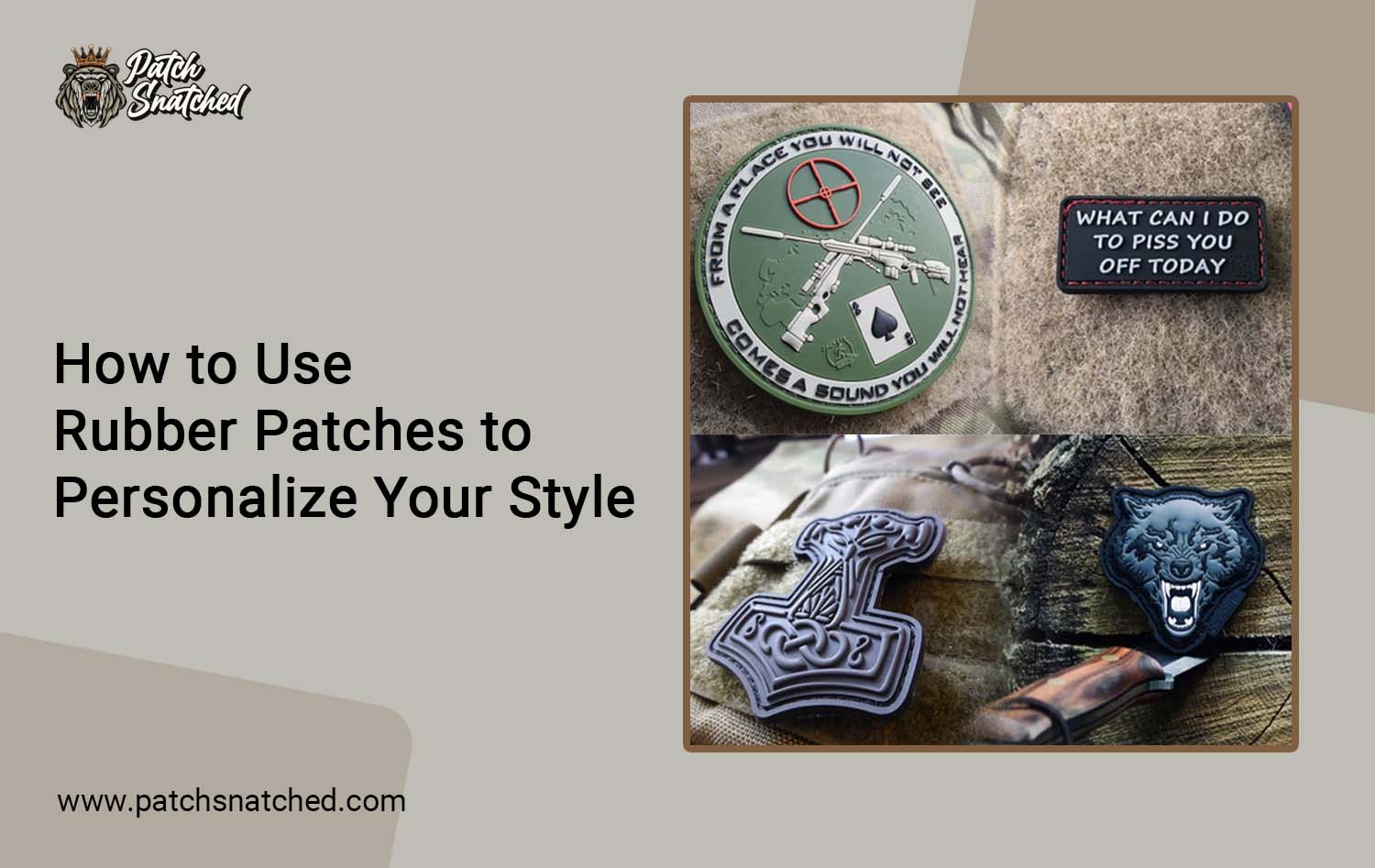In recent times, patches have become more widely accepted as a stylish accessory to express your interests. Using patches - be it for covering a hole in your trousers or attach it to your denim or jacket to express your support, it’s imperative that you comprehend the idea of cleaning and taking care of your patches. This blog will talk to you about the importance of cleaning and taking care of your patches so that they last longer. Before we understand how to
clean patches, its important to know about the various types of patches available and the material with which they are made of. Patches can be made with either rubber, embroidered,sequins and fabric. Depending on the make of the patch, the process of taking care also varies.
Let’s discuss the several ways with which we can do patch care.
Handwashing Patches
Handwashing is found to be the most secured method when it comes to cleaning clothes where patches are attached. Cleaning the patches gently in a basin with the use of a light detergent and luke warm water is the best way. You can soak the patched clothes in the detergent in the basin and mix it gently. You can tub the cloth gently using a soft brush gently making sure the cleaning is done everywhere. It’s not advisable to scrub and wash vigorously as it could cause
damage to the patches.
Using Washing Machine
Adequate precautions should be taken if you wish to clean your patches in a washing machine.Make sure you flip the cloth inside out before you put them in the washing machine. While washing, ensure that the patches are getting washed in cold water with a gentle detergent for a short cycle. You can also put the clothes with patches in a washing bag to prevent them from getting rubbed unnecessarily while washing.
Dry it, Try it
As we mentioned above once you are done washing, the excess water in the patches can be extracted by gently pressing the patches. Clothes with patches can be held in between towels upon finishing washing and press it gently to remove any excess water. For the patches to stay in their original shape, it’s best not to twist or wring the cloth.You can also bring back the shape of the patch by flattening it out on a dry towel. Please refrain from drying the fabric in the sun as
it can cause the fabric color to fade as well as destroy where patches are attached.
Iron it
When it comes to patch care, ironing is very important. Ironing should be done cautiously on clothes with patches in order to prevent any damage to the patches. For protecting the patches,it's best to turn the cloth inside out and iron on the back side of the patch. Also, remember to iron the patch on low heat, press lightly across the material but make sure you avoid the patches entirely. This will help you smoothen the fabric without causing any damage to the patches.
Observing Patches
You need to always have an eye on your patches wherever it’s attached. Regular maintenance and constant attention to be paid on patch to identify any damaged or missing threads. Checking your patched fabrics on a regular basis will help you identify any damage and repair it immediately without it going worse. This will help you ensure a longer life to your fabrics with
patches.
Avoid Using Bleach
Even though we mentioned this a little late, this should never happen. Reading through this blog till now would have made you aware how delicate the patches are and how gently it should be taken care of. Hence it’s never advisable to use strong chemicals like bleach to clear out any kind of stains on your patches. On the other hand, you can make use of gentle stain removers that are made specifically for using on fabrics. Even before using mild stain removers, we advise
you to first test it on a small hidden section to ensure there is no adverse reactions.
Careful storage
Last but not the least, to preserve the uniqueness of your patches, careful storage is also essential. Experts advise storing the patched garments or clothes in a clean and dry container will prevent the patch from fading or getting damaged. In order to prevent stretching or creasing of the patched fabric, it shouldn’t be hung on a wire hanger. Instead, placing those patched fabrics on specific bags which allows air circulation will not cause any harm from dust and dirt.
In addition, it should be taken note that the patch fabrics should not be placed on
damp surfaces or places hit by direct sunlight. This can cause fading of fabrics.
Conclusion
There could be a big to-list when you have to take care of your patches for it to
stay long. If you make sure, you follow the above information, you can make your
patches look new and make it long-lasting. If you still have any questions, you
can contact our team at
Patchsnatched who are the experts in creating and handling patches and they will guide you on your queries.



